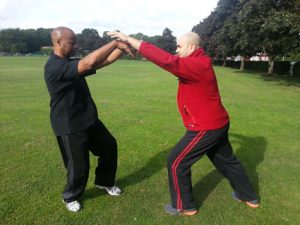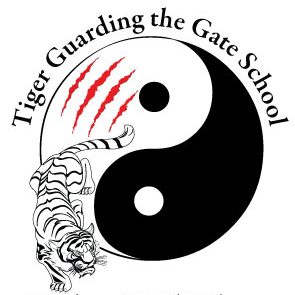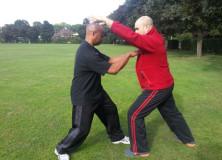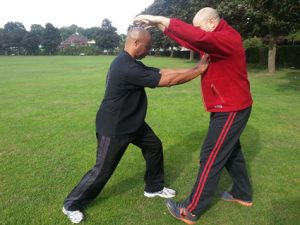 Sometimes, I feel students believe that application and pushing hands are somehow separate, something to be regarded as different. This is not the case, they are the same. It’s just that one is more obviously evident than the other. All our pushing hands drills teach important aspects of the techniques required to develop a good understanding of pushing hands and application.
Sometimes, I feel students believe that application and pushing hands are somehow separate, something to be regarded as different. This is not the case, they are the same. It’s just that one is more obviously evident than the other. All our pushing hands drills teach important aspects of the techniques required to develop a good understanding of pushing hands and application.
In applications (some more than others), when you counter, it will require a prolonged contact, eg: while stroking. This is in fact in the realm of push hands because sensitivity is a big part of pushing hands development. Push hands gives us the ability to change. This is more important than the counter as it determines what comes next.
In the system I practice we have a technique called “Beginning Style” where both our hands are raised. An example for the use of this technique is when an opponent tries to grab for your neck with both hands. Here we can use a pang upward diversion done in a circular motion, with perhaps a backward step to change the distance between you and your opponent. We then immediately strike, usually in and around the chest area in practice, but in a real situation we can strike anywhere we choose
Where is the sensitivity in this?
First there is the Pang adhesion in an upward and circular motion, which will divert an attack and draw the opponent on to your counter attack. Then there is the strike with a flat hand. With this strike, it is not so easy to deliver “full body force” to the opponent, as the exact distance is not known. (It would be nice if they just stood still!) 😉 However, this can be overcome if you lead a little with your fingers, thus knowing the exact distance to your opponent. This allows you to deliver your technique more effectively. If your technique is done correctly, the opponent will be moving into your counter attack (which is difficult for them to counter) and your strike will be added to their body weight for maximum effect.
Strategy
Sometimes we may decide use a slight delay (while in Peng Adhesion) before delivering our counter, allowing our opponent to start to correct themselves from a forward motion to a backward motion. This then allows us to change from a strike to a push, if we desire this effect.
In this case we must now be mindful that once we are striking or pushing, our opponent may also have the opportunity to counter.
Here is an example of the beginning stye, in this attack we are trying to strike the opponent as he is still moving towards us, maximising our counter. This gives the opponent little chance of countering and no real chance of preparing his body to receive our strike.


